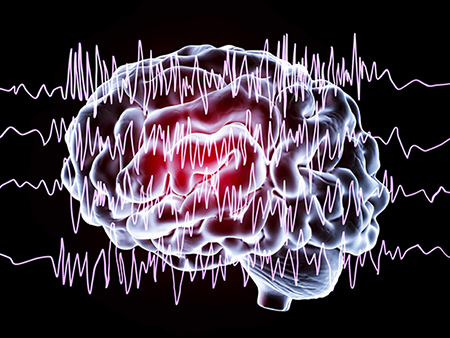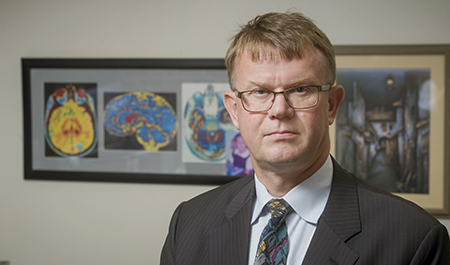 UAB researchers say lack of financial resources and health insurance, as well as living in the South, are keys to disparities in epilepsy care.Treatment of epilepsy in America varies depending on several social factors, including income, insurance and region, according to new research from the University of Alabama at Birmingham published online on April 12 in Epilepsy and Behavior.
UAB researchers say lack of financial resources and health insurance, as well as living in the South, are keys to disparities in epilepsy care.Treatment of epilepsy in America varies depending on several social factors, including income, insurance and region, according to new research from the University of Alabama at Birmingham published online on April 12 in Epilepsy and Behavior.
Using data from the 2013, 2015 and 2017 National Health Interview Survey administered by the Centers for Disease Control and Prevention, the researchers found that poverty is associated with a lower likelihood of anti-seizure medication use and the uninsured are less likely to visit a neurology provider, while people in the Northeast are more likely to see a neurologist. They also found that epilepsy treatment did not vary by race/ethnicity or immigrant status.
“According to the United States Institute of Medicine, there are significant social barriers to optimal care and health outcomes for people/persons with epilepsy (PWE),” said Magdalena Szaflarski, Ph.D., associate professor in the UAB Department of Sociology in the College of Arts and Sciences and the study’s first author. “This study examined those barriers, as this knowledge is essential and identifies potential points of intervention at the policy, public health and health care system levels. Social factors, not only clinical, need to be addressed in order to improve care and outcomes in this patient population.”
Szaflarski says insurance was a key social predictor of seeing a specialist, while poverty was a key barrier in medication use.
 Magdalena Szaflarski, Ph.D, says that poverty is associated with a lower likelihood of anti-seizure medication use.“The association between anti-seizure treatment and poverty extended over and beyond insurance status, indicating that not only access to care but also poverty effects more broadly (e.g., distance and transportation barriers) restrict opportunities for quality care and treatment among PWE,” she said.
Magdalena Szaflarski, Ph.D, says that poverty is associated with a lower likelihood of anti-seizure medication use.“The association between anti-seizure treatment and poverty extended over and beyond insurance status, indicating that not only access to care but also poverty effects more broadly (e.g., distance and transportation barriers) restrict opportunities for quality care and treatment among PWE,” she said.
The study documented several disparities in visits to an epilepsy provider and anti-seizure medication use in the U.S. sample of adult PWE and indicated that a large proportion of PWE continue to experience recurring seizures, an alarming trend, according to the authors, due to the broad array of advanced treatment options currently available.
“In our study, uninsured and people residing outside of the Northeast were less likely to visit an epilepsy provider in the past year compared with their insured and Northeast-based counterparts,” said Jerzy Szaflarski, M.D., Ph.D., director of the UAB Epilepsy Center in the School of Medicine and a study co-author. “Notably, the U.S. South has high burden of disease including epilepsy and has recently been referred to as “the Epilepsy Belt.” In this study, the South had the highest proportion of epilepsy cases, but much lower rates of neurology visits than in the Northeast.”
In particular, Szaflarski says, the findings are consistent with previous analysis of supply and demand for neurologists nationally and state-by-state.
“At the national level, over 1,800 more neurologists are needed to meet the demand, and this is reflected in previously published state-by-state estimates: The demand for neurologists in the majority of the states was estimated at 20 percent or higher than supply,” he said. “Only a few states, all but one in the Northeast region and the District of Columbia, had a supply of neurologists greater than the demand.”
Magdalena Szaflarski says the study contributes to better describing socially based variations in two aspects of epilepsy treatment: use of epilepsy specialized services and anti-seizure medication use.
 Jerzy Szaflarski, M.D., Ph.D., says there is a shortage of 1,800 neurologists in the United States“Information from this study can guide health and disability policies, public health programs and health care delivery systems to strengthen resources and access to care/treatment for PWE, especially for people with treatment-resistant seizures,” she said. “Engaging patients/families in policy and program development, as well as research, is also essential for further understanding of the needs of this population and opportunities for improvements.”
Jerzy Szaflarski, M.D., Ph.D., says there is a shortage of 1,800 neurologists in the United States“Information from this study can guide health and disability policies, public health programs and health care delivery systems to strengthen resources and access to care/treatment for PWE, especially for people with treatment-resistant seizures,” she said. “Engaging patients/families in policy and program development, as well as research, is also essential for further understanding of the needs of this population and opportunities for improvements.”
Co-authors on the study are Joseph D. Wolfe, Ph.D., associate professor of sociology, Joshua Gabriel S. Tobias, graduate assistant in sociology, and Ismail Mohamed, M.D., associate professor of pediatric neurology.
This study was supported by the Interdisciplinary Innovation Team Award from the UAB College of Arts and Sciences, with a contribution by the UAB Center for Clinical and Translational Science (CCTS; National Institutes of Health grant UL1TR003096).